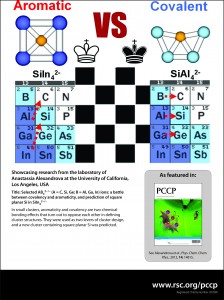Superresolution imaging and fabrication with light
Guest Editors: Françisco M. Raymo (University of Miami, USA)
PCCP is delighted to announce the high-profile themed issue ‘Superresolution imaging and fabrication with light’. It is our pleasure to invite you to submit to this themed issue.
The themed issue will be published in PCCP in 2013 and will be promoted to the community throughout the year to maximise the visibility of the work published.
Deadline for Submissions: 8 April 2013
Diffraction prevents the focusing of light within volumes of subwavelength dimensions. As a result, this unavoidable physical phenomenon limits the resolution of imaging and lithographic techniques based on far-field optics. In order to overcome these stringent limitations, significant research efforts have been directed, over the past decade, to the identification of protocols to overcome diffraction.
Some of these methods rely on the photochemical and photophysical properties of engineered chromophores to circumvent diffraction. These clever operating principles have already succeeded in bringing the resolution of fluorescence imaging and photolithography down to the nanoscale. Indeed, they are starting to impact biomedical research and, presumably, will soon have similar implications in information technology.
Thus it is timely to publish a themed collection in PCCP on this emerging and extremely promising area of research. The themed collection will provide a general overview of the fundamental principles of these strategies as well as covering optical imaging and fabrication at the nanoscale.
It is essential that all submissions to PCCP should contain new physical insight and contributions to this themed collection will be assessed on this basis.
- Manuscripts can be submitted in any reasonable format using our online submissions service
- Submissions should be high quality manuscripts of original, unpublished research
- Communications and full papers can be submitted for consideration, which will be subject to rigorous peer review
- Please indicate upon submission that your manuscript is intended for this themed is intended for the themed issue
Please contact the PCCP Editorial Office to let us know you plan to contribute an article.












 In this fascinating PCCP Perspective
In this fascinating PCCP Perspective 